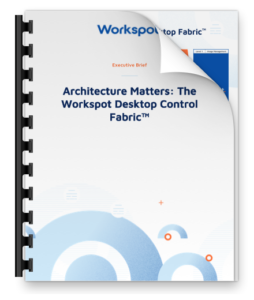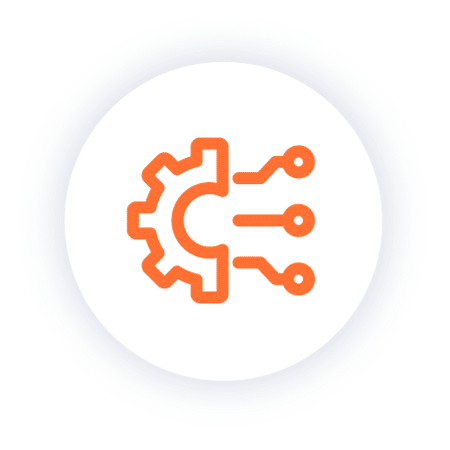Conversations with Customers: Hybrid Work Trends and Lessons Learned
I recently conducted a webinar with one of our customers, David Ferguson, Director of IT at Barge Design Systems. When you have a little more time, you can watch us on-demand here. In this week’s blog, I wanted to share some of our conversations about remote work and hybrid work trends as well as how Barge reinvented working from home at their firm.
Remote and Hybrid Work Trends
At Workspot, we hold webinars regularly, and I always include a series of polling questions. It’s interesting to see over time how the answers from attendees shift, giving us a good sense of what’s top of mind for people. One of the questions I always ask the audience is “Where is your primary work location?” Of course, you can guess that during the lockdown, the vast majority of people have been primarily working from home – upwards of 80% for much of the last 18 months. In the poll last week, it was notable that the numbers of people declaring the office as their primary work location have started to increase – about 36% in our audience poll, whereas the percent of people working primarily from home has dropped to 55%. Some people have always worked from home – about 9% in this poll. It seems that a cautious shift back to the office – part time – is taking place, and yet overwhelmingly people want (are demanding in many cases) the flexibility to work anywhere. I wanted to discuss the implications of that with Barge.
What can we learn from examining “a day in the life” of a Barge power user? Here are some of my key takeaways from our conversation.
Keep Your Data Close
Back in the day, Barge provided their designers with expensive, GPU-powered workstations. These high-end workstations are really a thing of beauty, until you have to carry it around or work remotely! In some cases Barge would double up on the hardware and provide people with a workstation at home too – then they would VPN in to the data to do their work. That’s when things get really dicey. Setting aside the cost of redundant hardware, performance problems, security risks and data integrity are all problems that arise with VPNs. For CAD designers/engineers working on huge 3D files, the distance to their data is critical because latency kills performance. This was all problematic before Covid, but now that most people will be working from home at least part time, the VPN approach is obsolete.
Traditional VDI is another approach to supporting remote work, but distance-to-your-data is still a problem. Anyone who is remote from that datacenter will probably be pretty unhappy with performance. Darn those laws of physics! Latency just is.
The Barge team knew they had to address the latency and data integrity challenges, so they got started by implementing Panzura controllers in some of their branch offices. This was the first step in moving data closer to end users, and it was a smart move. When they discovered Workspot, they took the next step: They moved their workstations to Microsoft Azure alongside a Panzura instance in Azure. What’s really bold about this step is that they started with the most difficult workload – their CAD power users who used the most GPU-intensive apps. That didn’t worry us at all, but that leap of faith by the Barge team would prove to be highly valuable to the business.
Achieve a Consistent User Experience
Some of the Barge designers were quite resistant to Workspot. “I was very suspect and resistant to Workspot initially,” said power user Josh Caldwell. The IT team worked closely with the initial group of cloud workstation adoptees to address their concerns – mainly about the “unknown.” Once these power users tried their cloud workstations, they never looked back. Josh goes on to say, “Now I can’t imagine a day of work without Workspot!” At this point, the days of over-provisioning hardware, worrying about data replication, and enduring lackluster performance over a VPN are over. The rollout of Workspot continued, with some of the strongest resisters to the change becoming the most vocal with their praise for their cloud workstations.
This takes us to March 2020 when everyone had to go home to work. Barge IT Director David Ferguson said, “It was business as usual.” We’ve heard this many times from our customers, and it never fails to astonish me. During the biggest business disruption in history, Workspot customers experienced “business as usual” when they sent people home to work. From the standpoint of the technology and the user experience, the shift to remote work was a non-event, because accessing and working on your cloud workstations is exactly the same great experience – no matter where you are working or what end point you are using. This is how productivity increased at Barge during this time. When people changed locations, nothing about their compute experience changed. It is always a consistent user experience, anywhere they need to work.
Infrastructure? Just Say “No”
Many organizations have branch offices for one reason or another, and buying and maintaining server infrastructure is no picnic. Barge has many branch offices, and it was a huge resource commitment to keep up on all that infrastructure, in addition to trying to keep laptops up to date with security patches.
With Workspot, all that cost and effort is history. There’s no infrastructure to deal with – Workspot has all of that covered. The last two branch offices Barge opened were totally server-less. You only need an internet connection and then you get to work right away on your cloud workstations. Hardware refreshes are history too, and older endpoints are new again when they access a Workspot Cloud PC or workstation. The Barge team is enjoying the freedom of having a lightweight device that is portable, so they can pick up and go wherever they need to work. “We are out of the hardware business,” said David Ferguson.
Be Ready for the Next Disruption
Because they have so many branch offices, Barge has been affected by natural disasters in the past. They have been in the difficult position of losing productivity when a whole fleet of PCs and workstations had to be replaced after a tornado. Worse, before Panzura, the data those people needed to keep working was just not available at any other location. Today, if bad weather in on the way, as long as the power is on and people are safe, they can get back to work using any device at hand, because apps and data are in the cloud. That’s an amazing thing when we’re talking about designers who cannot compromise on performance! The Barge teams calls out this greater business resiliency as a major benefit of Workspot and Panzura.
Ready to learn more? Schedule a demo and we’ll show you how it works!




